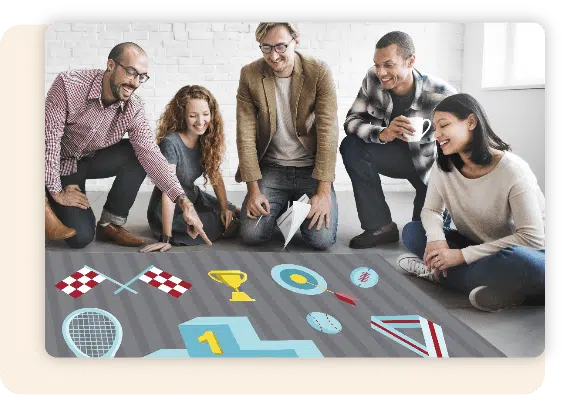
Get Started with Free LMS
Boost Skills and Performance at No Cost!


Colleges frequently hold discussion seminars. They follow a lecture or study (such as a weekly reading). Peers discuss the newly learned topic in the discussion seminar. Unstructured discussion seminars allow students to contribute when they have something to say.
A teacher may use a stimulus question or object. Then, students use the prompt to discuss the topic’s nuances, contradictions, and features. Teachers must create a safe, comfortable space for discussion seminars to be successful.
Access 100+ fully editable, SCORM-compatible courses featuring an integrated AI Tutor and an in-built authoring tool. Seamlessly compatible with any LMS, these courses are designed to elevate your training programs.
Explore Course CatalogPrivate study groups are peer support groups. Peers organize these without a teacher’s presence. Free time, after school, and weekends are typical times for peer study groups.
Peer-to-peer study groups can motivate students before exams or due dates. Cooperative students avoid distraction, boredom, and frustration. When studying with peers, a student can get support and explanations.


In peer-to-peer learning assessment schemes, students check each other’s work and provide feedback. The following are some of the advantages of peer assessment programs:
On the other hand, peer assessment schemes are rarely used for summative or formal assessments that require strict quality control checks.
Science labs require teamwork. Students work together to solve a teacher-posed problem. Collaborative projects are popular in 21st-century problem-based and problem-posing education. Long-term student collaboration has benefits like:

People in a workplace are paired up to support one another through workplace mentoring.
Mentor Trainee Relationship
A more experienced member of the workplace team mentors a new team member. This method closely resembles the situated learning approach, in which an apprentice is gradually integrated into the workplace by watching their peers work.
Peer to Peer Learning Support
Peers will observe one another at work regularly to provide and receive tips and assistance on how to complete tasks more effectively or efficiently.
Just answer a few quick questions, and we’ll match you with the perfect LMS within your budget.
To test each other's knowledge, ask each other questions.
Ask each other to make predictions based on their limited knowledge.
Ask each other to summarize something more concisely.
When you're unsure about something, ask for assistance.

Students are divided into two groups using the expert jigsaw method:
Session 1:
In the first session, each group focuses on a different aspect of the topic.
Session 2:
Students form new groups afterwards. Each new group needs a member from each previous group. This ensures that each group has a topic expert. These new groups work knowing they have a wealth of knowledge.
LMS Integrations
























Peer-to-peer learning fosters deeper engagement, practical knowledge sharing, and real-world problem-solving among employees, leading to better retention and application of skills across teams.
Yes, Paradiso LMS integrates seamlessly with your HRIS, CRM, and collaboration tools, allowing smooth data flow and consistent user experiences across your training ecosystem.
You can schedule a personalized demo to explore how Paradiso LMS can enhance your organization’s peer-to-peer learning initiatives and streamline training outcomes.
Yes, Paradiso LMS offers a Free LMS plan that allows organizations to experience the core features of the platform with no upfront costs. This free plan provides access to essential tools for small teams or pilot programs, giving you the opportunity to explore how Paradiso LMS can enhance your training initiatives before committing to a paid plan.

It involves changing people to improve performance, which in turn changes organizations to improve success


Check out our advice on selection of the ideal LMS for your training company so that your clients have the finest learning experience possible

A scalable, AI-powered learning platform with advanced analytics and mobile access—built to drive performance across your organization.

Rapidly create professional, interactive courses with AI-driven course-building tools tailored for business training.

Access a curated library of certified, industry-relevant courses to upskill teams, ensure compliance, and accelerate growth.